#gray whales baja
Explore tagged Tumblr posts
Text
Gray Whale Watching in Baja: Nature's Greatest Marine Spectacle
Baja California's pristine lagoons transform into natural amphitheaters each winter as hundreds of gray whales arrive from their Arctic feeding grounds. This annual migration, spanning from December through April, offers wildlife enthusiasts unparalleled opportunities to witness these magnificent marine mammals in their natural breeding and calving grounds.
The region's three primary lagoons – Magdalena Bay, San Ignacio, and Ojo de Liebre – each offer distinct viewing experiences. San Ignacio Lagoon is renowned for its "friendly whale" encounters, where curious whales often approach boats, sometimes close enough for gentle physical contact. Magdalena Bay provides excellent photography opportunities with its crystal-clear waters, while Ojo de Liebre hosts the largest concentration of mother-calf pairs.
Professional gray whale watching Baja tours operate under strict guidelines designed to protect both whales and visitors. Small pangas (traditional Mexican fishing boats) carry limited numbers of passengers, ensuring intimate viewing experiences while minimizing disturbance to the whales. Experienced local captains, many from families with generations of maritime knowledge, skillfully navigate these shallow waters.
The behavior of grey whale watching Baja differs markedly from their Arctic feeding patterns. Here, they engage in complex social interactions, including courtship rituals and maternal care. Visitors frequently witness spectacular displays such as spy-hopping (vertical rising to observe surroundings), breaching (launching out of water), and fluking (tail displaying). Mother whales can often be seen teaching their calves essential life skills in these protected waters.
Morning excursions typically offer optimal viewing conditions when waters are calmest and whale activity peaks. Tours usually last 2-3 hours, though duration can vary based on whale behavior and weather conditions. Many operators provide hydrophones, allowing visitors to listen to the haunting underwater vocalizations of these gentle giants.
The region's unique geography contributes to successful whale watching. Protected lagoons provide shelter from open ocean conditions, while shallow depths create perfect nursery environments for newborn calves. The lagoons' warm, salt-rich waters support the high energy demands of nursing mothers and developing calves.
Conservation efforts play a crucial role in maintaining this extraordinary ecosystem. Local communities have transitioned from hunting to protection, developing sustainable tourism practices that benefit both whales and people. Research stations throughout the region monitor whale populations, study behavior patterns, and assess environmental impacts on migration routes.
Weather considerations significantly influence viewing experiences. Winter months bring pleasant temperatures, though morning trips can be chilly. Operators provide safety equipment and often include warm beverages and light snacks. Many recommend bringing layered clothing, sun protection, and cameras with zoom capabilities.
The economic impact of whale watching has revitalized coastal communities. Local guides share rich cultural histories alongside natural interpretation, while restaurants and accommodations cater to international visitors. This sustainable tourism model demonstrates how conservation and community development can successfully coexist.
Educational components enhance the experience, with many tours including presentations on gray whale biology, migration patterns, and conservation challenges. Some operators participate in citizen science programs, allowing visitors to contribute to ongoing research while enjoying their wildlife adventure.
This extraordinary natural phenomenon continues to captivate visitors from around the globe, offering chances to connect with marine life in ways impossible elsewhere, while supporting crucial conservation efforts in one of the world's most important whale sanctuaries. https://graywhalewatching.com/gray-whale-watching-in-baja/
#Whale watching in Baja#Baja whale watching#Baja gray whale watching#Gray whales Baja#Grey whales Baja#Grey whale watching baja#Gray whale watching baja#Best Whale Watching in Baja Mexico
0 notes
Text
Baja's Gray Whale Spectacle: A Guide to Unforgettable Encounters
Baja California, Mexico's sun-drenched peninsula, is renowned for many natural wonders, but none quite compare to the annual gray whale migration. Each winter, these gentle giants of the sea travel over 5,000 miles from their Arctic feeding grounds to the warm, sheltered lagoons of Baja. For wildlife enthusiasts and casual travelers alike, witnessing this spectacular event is a bucket-list experience that combines natural beauty, scientific marvel, and heart-stirring encounters.
Prime Locations for Gray Whale Watching Baja
Baja California boasts three primary lagoons where gray whales congregate, each offering unique viewing opportunities:
Laguna Ojo de Liebre (Scammon's Lagoon): Located near the town of Guerrero Negro, this is the largest of Baja's whale nurseries. It's known for consistent whale sightings and well-developed tourist infrastructure.
Laguna San Ignacio: Often considered the heart of gray whale watching, San Ignacio is famous for intimate encounters with "friendly" whales. It's more remote, offering a pristine, less crowded experience.
Bahía Magdalena (Magdalena Bay): This expansive bay system provides diverse whale watching opportunities, from the open Pacific to mangrove-lined channels.
The Whale Watching Experience
Grey whale watching Baja is unlike anywhere else in the world. Here's what you can expect:
Close Encounters: Baja is unique for its "friendly" whales, curious individuals that often approach boats, sometimes close enough for a gentle touch.
Expert Guides: Local naturalists and biologists lead most tours, providing insights into whale behavior, biology, and conservation efforts.
Small Group Sizes: Regulations limit the number of boats and visitors, ensuring minimal disturbance to the whales and a more personal experience for tourists.
Varied Perspectives: Options range from traditional panga (small fishing boat) tours to kayaking expeditions and even glamping experiences on the lagoon shores.
Best Time to Visit
The gray whale watching season in Baja typically runs from mid-December to early April, with peak activity in February and March. During this time:
December-January: The first whales arrive, with numbers steadily increasing.
February-March: Peak season, with the highest concentration of whales and most active behaviors.
Late March-Early April: Whale numbers decrease, but you might witness mothers and calves preparing for their northward migration.
Planning Your Gray Whale Watching Adventure
To make the most of your Baja gray whale experience:
Choose Your Base: Decide which lagoon you want to visit and book accommodations accordingly. Options range from eco-camps to comfortable hotels in nearby towns.
Select a Reputable Tour Operator: Look for companies with strong environmental ethics and experienced guides. Many operators contribute to whale research and conservation efforts.
Prepare for the Elements: Bring layers, sun protection, and waterproof gear. Mornings can be chilly, but afternoons are often warm and sunny.
Bring the Right Equipment: A good camera with a zoom lens is essential. Binoculars can enhance your viewing experience, especially for distant whale behaviors.
Be Patient and Respectful: Remember, you're observing wild animals in their natural habitat. While sightings are nearly guaranteed during peak season, the whales' behavior can be unpredictable.
Beyond Whale Watching
To enrich your Baja experience, consider complementary activities:
Visit the San Ignacio Lagoon Whale Museum to learn about gray whale biology and conservation.
Explore the surrounding desert landscapes, home to unique flora and fauna.
Bird-watching opportunities abound, with many migratory species visiting the lagoons.
Experience local culture in charming Baja towns, sampling fresh seafood and traditional cuisine.
Conservation and Responsible Tourism
The success of gray whale watching in Baja is a testament to effective conservation measures. Once hunted to near-extinction, these whales have made a remarkable recovery. Today, responsible tourism plays a crucial role in their ongoing protection by providing economic incentives for conservation.
When choosing a tour, prioritize operators that follow strict wildlife viewing guidelines and contribute to local community development and research initiatives. By doing so, you're not just witnessing one of nature's great spectacles; you're actively supporting the preservation of these magnificent creatures and their critical habitats.
A gray whale watching expedition in Baja offers more than just wildlife viewing; it's a transformative experience that connects you with the rhythms of the natural world and the majesty of marine life. Whether you're locking eyes with a curious whale calf or marveling at a mother's protective grace, these encounters leave an indelible impression, fostering a deeper appreciation for the wonders of our oceans and the importance of preserving them for future generations. https://www.greywhale.com/gray-whale-watching-in-baja/
#Whale watching in Baja#Baja whale watching#Baja gray whale watching#Gray whales Baja#Grey whales Baja#Grey whale watching baja#Gray whale watching baja
0 notes
Text

Gray whales (pictured, a female and her calf in Baja, California) have been extinct in the Atlantic since the late 1700s, wiped out largely by whaling.
PHOTOGRAPH BY HIROYA MINAKUCHI/MINDEN PICTURES
#hiroya minakuchi#photographer#national geographic#minden pictures#gray whale#whale#marine photography#animal#baja#california#nature
31 notes
·
View notes
Video
tumblr
“ Heart-shaped breath “ // © Daina Buchner
Music: Hans Zimmer, Benjamin Wallfisch - Joi
#Baja#California#United States#nature#seascape#oceanscape#wildlife#marine life#gray whale#4K#8K#12K#fpv#drone#reels#aesthetics#wanderlust#explore#follow#discover
188 notes
·
View notes
Text

Rafael Fernandez Caballero Photography
Close up image of a gray whale eye taken off the coast of Baja California Sur, Mexico.
Image credit: Rafael Fernandez Caballero/UPY 2024
#art#photography#surreal#freaky#eyes#underwater#rafael fernandez caballero#close up#gray whale#whale#mexico#baja california sur#UPY2024#wildlife#wilderness
1 note
·
View note
Text
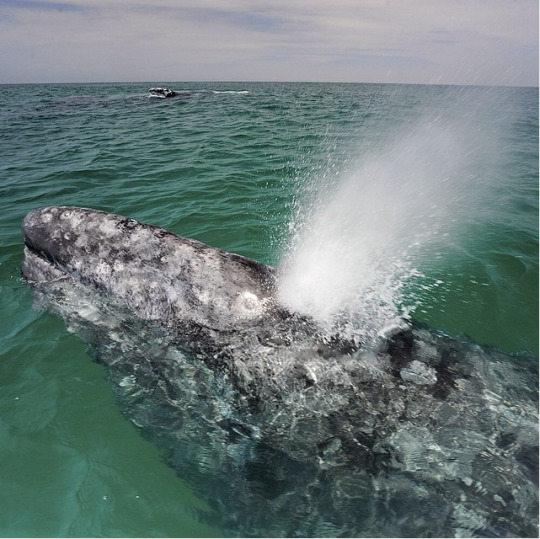
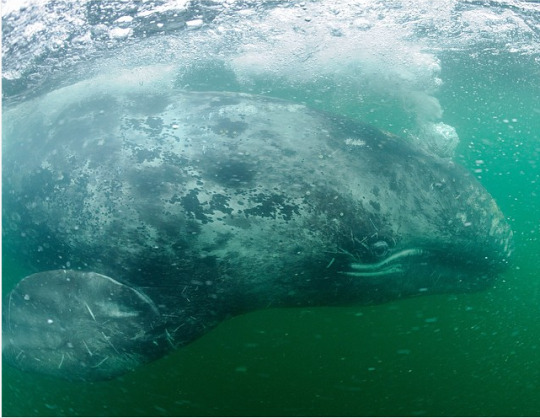
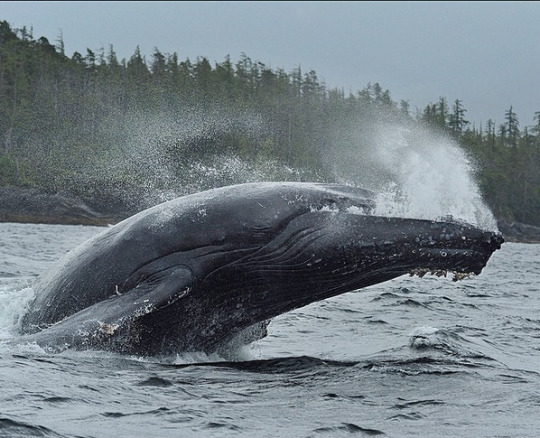
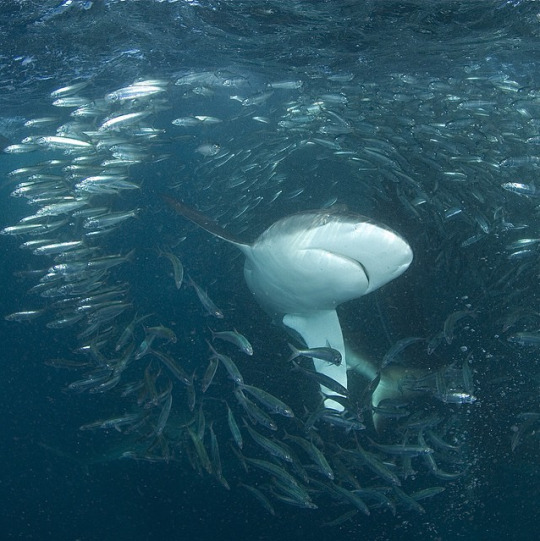
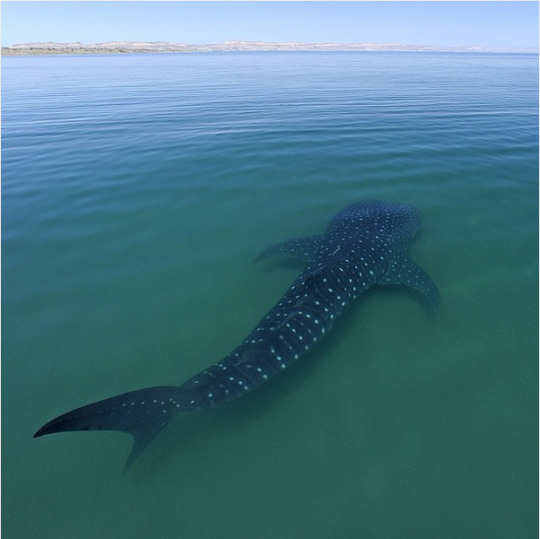

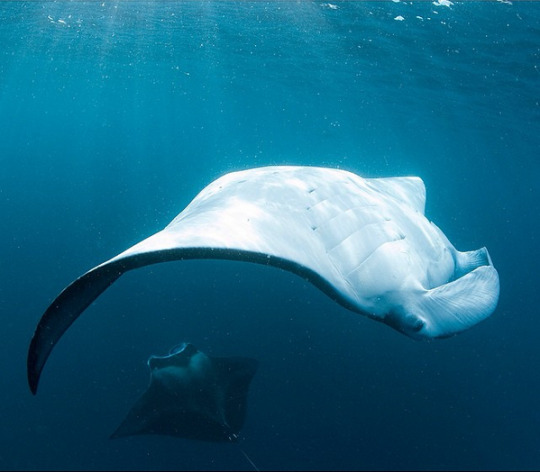
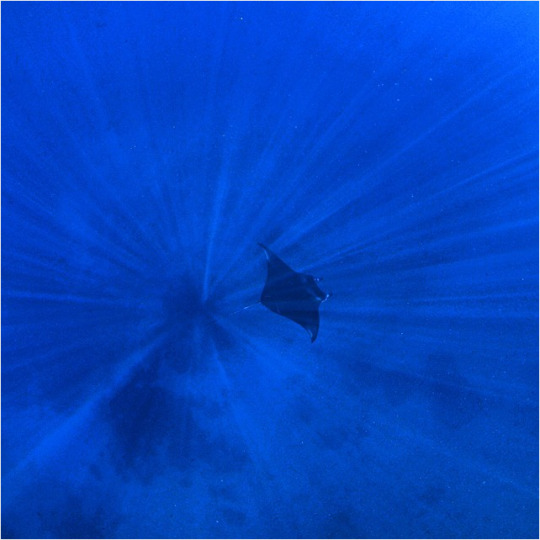


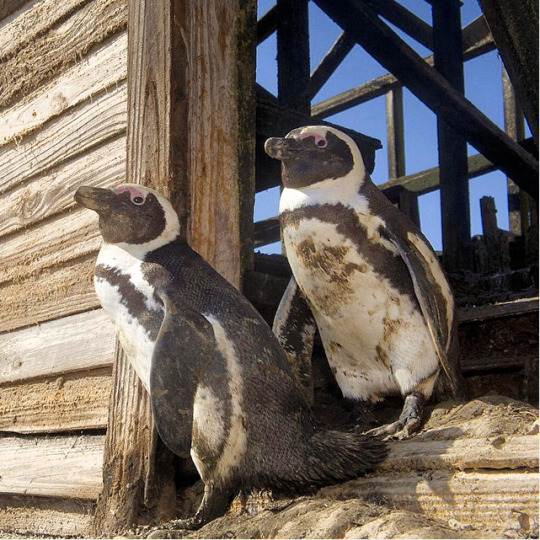

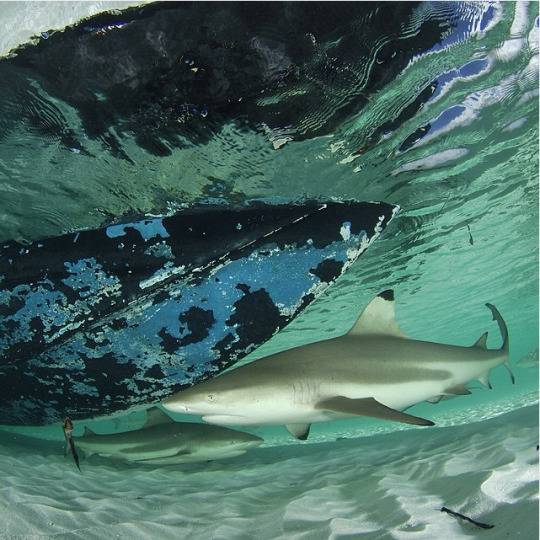
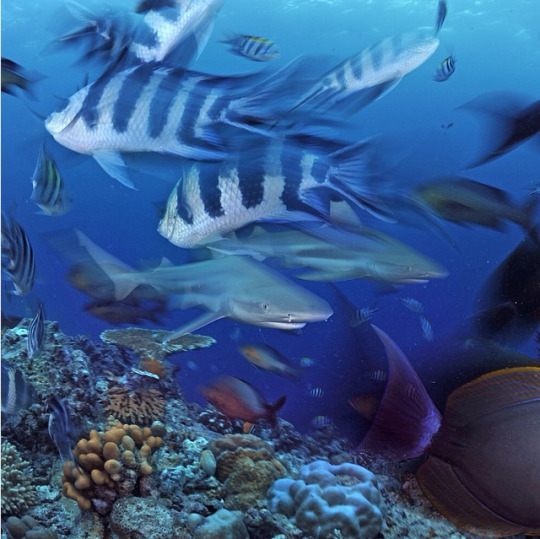

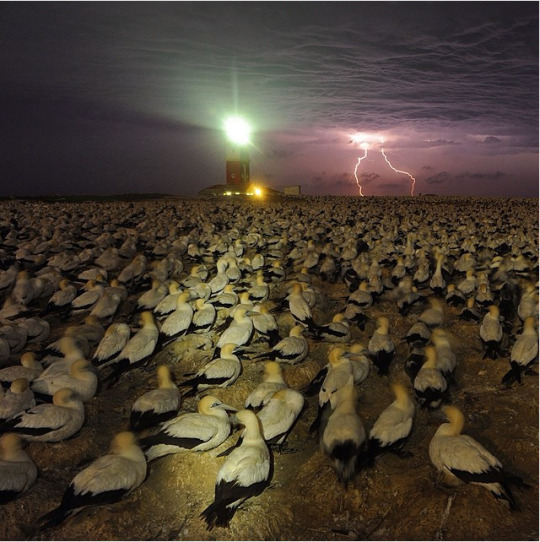
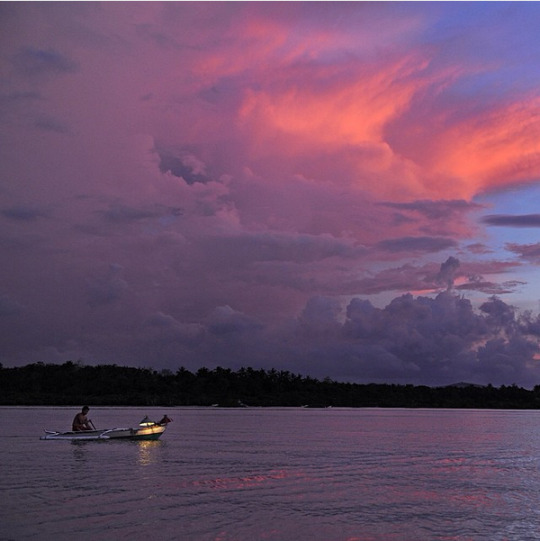
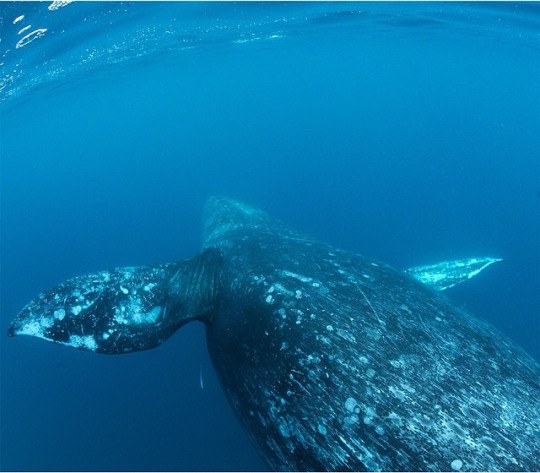

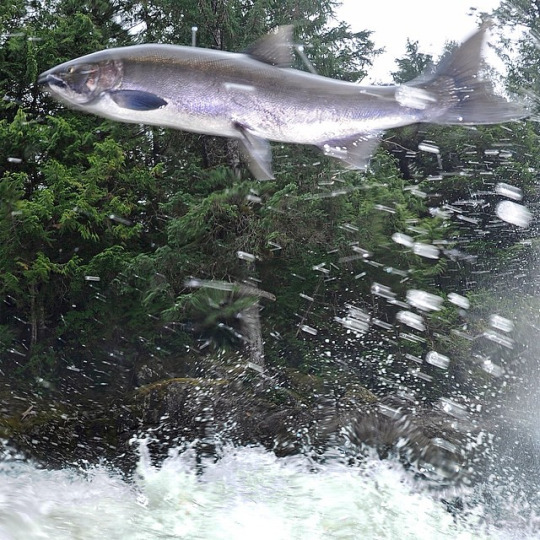
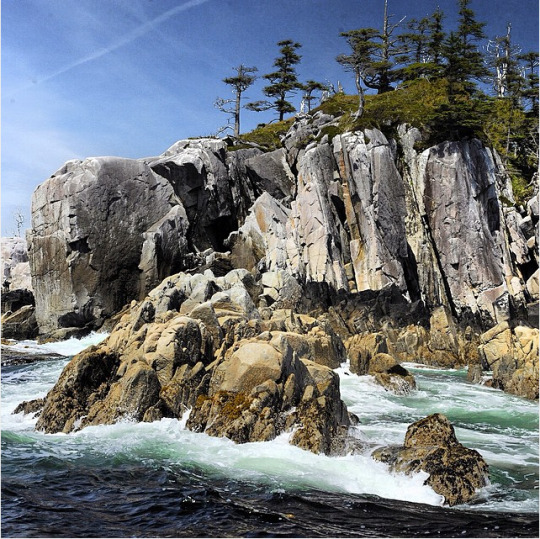
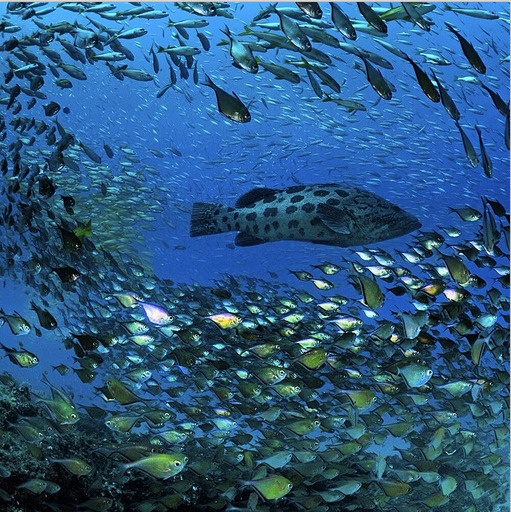
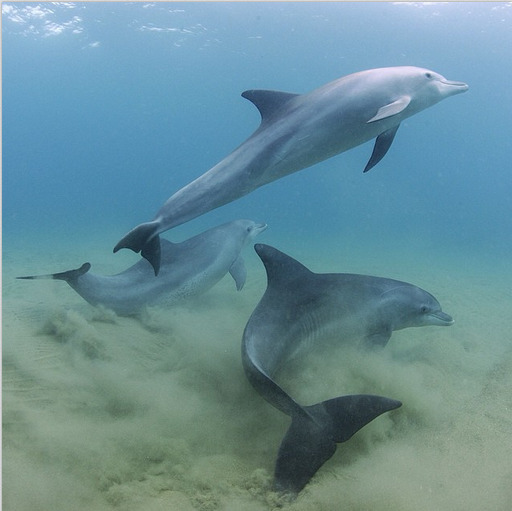
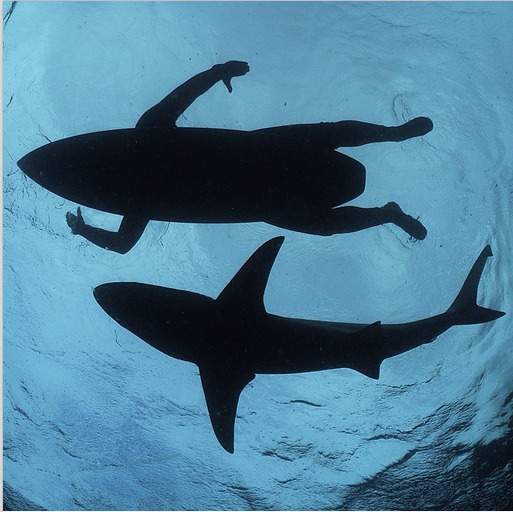
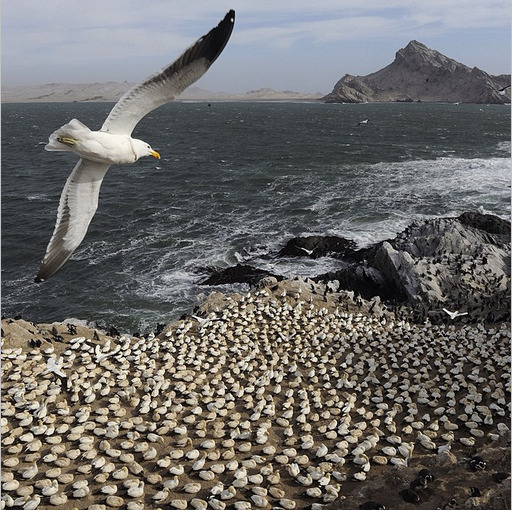



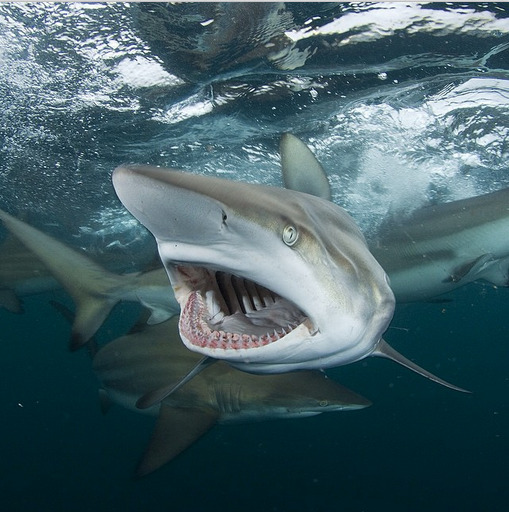
Photos and texts: @thomaspeschak
1-. A curious gray whale exhales almost directly into my camera
2-. A curious juvenile gray whale vigorously exhales and speeds past my camera in Mexico's San Ignacio Lagoon
3-. A Humpback whales breaches in the North Pacific Ocean off Canada's Great Bear Rainforest
4-. A dusky shark charges through a baitball of sardines
5-. y 6-. A whale sharks swins in shallow water in La Paz Bay, Baja California Sur
7-. A reef manta ray feeds on a plankton patch by barrel rolling over and over again in the same spot, not unlike a puppy chasings its own tail
8-. A reef manta ray feeds along the drop off at D'Arros Island an St. Joseph Atoll. Seychelles
9-. African peguins
10-. A endemic Socotra cormorant comes in to land on a roosting rock deep within the Fjords of Oman's Musandam Peninsula (2012)
11-. African peguins shelter and nest in decaying building long abandoned b the guano industry on Namibia's Halifax Island
12-. At Aldabra atoll green sea turtles often rest for hours on the sandy seabed between coral outcrops
13-. Blacktip reef sharks inspect the hull of our boat on Aldabra's tidal flats. Seychelles
14-. Blacktip reef sharks patrol the drop off where D'Arros Island's coral reef descendes into deeper water
15-. Cape fur seals surf Altantic swell in the Table Mountain Marine Protected Area
16-. Cape Gannet colony on Bird island bathed by lightening and the beam of the lighthouse
17-. The hunt begins at dusk and continuous deep into the night
18-. A curious gray whale swins upside down beneath our boat in Mexico's San Ignacio Lagoon
19-. A venomous lionfish hunts baitfish in Mozambique's Ponta do Ouro marine reserve, by @thomaspeschak
20-. A salmon leaps high into the air to clear a raging waterfall
21-. A wild rocky point just out into the North Pacific Ocean
22-. A large potato grouper hunts amongst schools of baitfish that seasonally drape southern Mozambique's reefs
23-. Dolphins of Indo pacific
193 notes
·
View notes
Text
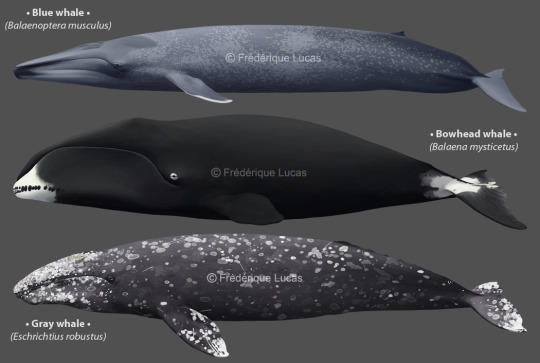
Big Bearded Beasts
In other words: new baleen whale friends! These were for Pappyr, an Icelandic company that sells posters and postcards. They are currently working on a new poster showing Icelandic cetaceans (I've seen the preview, it's super sweet!) with my illustrations on it. Most I had ready to go, but a couple had to be made anew.
Amongst which these three ladies. Blue whales I've illustrated a bunch now, but the ones I've had were too small for this poster. So finally an illustration made at a large size (7000px) befitting the largest animal to ever have lived. Every time I work on them I discover something new to change compared to the last version!
Bowhead whales I feel I still haven't sussed out. There are so few good photos of them that actually show overall body proportions, and their faces seem different every time. They're fascinating animals though and I hope this one does them enough justice. They are probably the longest living mammal, reaching upwards of 200 years of age!!
The Gray whale is by far my favourite of this bunch. Last I illustrated them was over 10 years ago, in 2012. While I was still fond of the old illustration, working on this new one made me realise how much could be improved. They've such beautiful, unique faces, and painting all those spots and scratches that mark their skin (in part natural colouration, but mostly scars from barnacles and other hitchhikers) was a lot of fun. Gray whales too are record holders, making the longest migration of any mammal. Their yearly round trips between the Arctic feeding grounds and calving grounds off Baja California are good for 16,000 - 22,500 kms.
#illustrations#YISSSS finally some new stuff to show you guys#so much fun to have illustration work again!#and I'm so happy with almost all of them#hope you guys will like them too#Blue whale#Balaenoptera musculus#Bowhead whale#Balaena mysticetus#Gray whale#Eschrichtius robustus#baleen whale#whale#Bowhead#Grey whale#scientific illustration#digital art
100 notes
·
View notes
Text
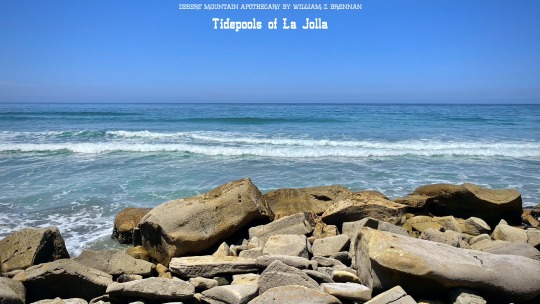
Tidepools of La Jolla, California – Nursery of The Pacific Ocean Marine Life - Torrey Pines, California – San Diego Pacific Ocean Beach Adventure
youtube
To the north and east of the beach Los Peñasquitos Marsh Natural Preserve is one of the last remaining salt marsh areas and waterfowl refuges in southern California. The marsh, coves, and tidepools are rich in sea life: limpets, shore crabs and hermit crabs, mussels, barnacles, sea anemones, and many species of snails and cast-off shells.
This is the perfect place to watch the annual gray whale migration. All year round, you can see Seals, dolphins, porpoises, and sea lions in the ocean. About two hundred species of birds are protected at the reserve, including migratory ones.
Year round Resident shore birds include brown and American white pelicans, black-bellied and snowy plovers, American avocets, western sandpipers, willets, whimbrels, sanderlings, great egrets, and longbilled curlews. Occasionally, visitors may see gray foxes, bobcats, coyotes, and mule deer. Reptile residents include rattlesnakes and various other snakes and species of lizards, including the endangered horned lizard.
The Torrey Pines 2,000-acre reserve contains about 300 endangered and protected species of native plants. These vanishing habitats are home to sand verbena and beach primrose on the beach, as well as California sagebrush, California buckwheat, black sage, and coastal barrel cactus. On the cliffs other high elevations there are many chaparral plants, including chamise, manzanita, ceanothus, California scrub oak, toyon, and mountain mahogany. Many of these scrub plants in particular provide the refreshing herbal fragrance that mixes so incredibly with the ocean breeze.
Before this area was colonized by Spain, the Kumeyaay tribes migrated lived here, and migrated between here, the deserts, and the mountains throughout the seasons. The land was bountiful, and the Kumeyaay would have fished, hunted, collected crustaceans, and gathered seeds, fruit, roots, to create probably a very healthy and tasty diet. The Kumeyaay have left an indelible archaeological and cultural legacy here in San Diego county and they continue to be a strong tribal nation today both here and south of the border in Baja Norte state.
The water is usually so clean and clear here, and because of the lack of shoreline development, and the underwater marine reserve, this constantly ranks as one of the 3 cleanest beaches in SoCal. This is a wonderful rare instance of extremely valuable real estate, both being a wildlife refuge and habitat, and a beautiful escape from civilization for people to enjoy for the most part in harmony.
It’s been an incredible day on the coast here in Torrey Pines and La Jolla, and I’m so glad that we were able to explore my favorite beach together. You can enjoy my series: Torrey Pines – La Jolla, California – San Diego Pacific Ocean Beach Adventure, full length, 3 glorious days on the North County coast, and experience all of the different moods and landscapes from the ever-changing interplay between the coastal inversion and sunlight.
youtube
Full Length Video: https://www.youtube.com/watch?v=eLyySza85jA
Thank you so much for joining me for this adventure in my favorite beach town on the west coast, the gem of the San Diego coastline, La Jolla, California. It means the world to me to be able to share my treasured slice of heaven in the summer heat with you, and thank you so much for watching, upvoting, commenting, and subscribing.
All the best,
William Z. Brennan & Desert Mountain Apothecary
Please Enjoy Anza Borrego Desert Wildflower Superbloom – We had the most incredible wildflower superbloom in the California Desert this past year, join me from the beginning of the cold winter through the waves of dazzling blooms to the hot end of the season.
youtube
Web: https://desertmountainapothecary.com/
Medium: https://desertmountainapothecary.medium.com/
Mastodon: https://mindly.social/@DesertMountainApothecary
Spoutible: https://spoutible.com/DesertMountainApothecary
Pinterest: https://www.pinterest.com/desertmountainapothecary/
Reddit: https://www.reddit.com/user/desertmtnapothecary/
Tumblr: https://www.tumblr.com/desertmountainapothecary
Please Enjoy More Videos!
Supreme Superbloom! Anza Borrego Desert Spring Wildflowers! - https://www.youtube.com/watch?v=jGDPHEmN3v8
Grateful Desert Ocotillos - https://www.youtube.com/watch?v=Bstybc3XcAk
Coyote Canyon Offroad Adventure! - https://www.youtube.com/watch?v=WQYPvqj2ouU
Julian & Santa Ysabel, CA Epic San Diego Backcountry Road Trip- https://www.youtube.com/watch?v=r2Z_o0S4Hpg
Bellport in Spring - https://www.youtube.com/watch?v=_J9hzsFhS-k
Santa Ysabel Preserve – Backcountry Hiking - https://www.youtube.com/watch?v=2XLrSJMLXUw
#youtube#california#southern california#beach#travel#la jolla#socal#north county san diego#san diego#ocean#Tidepools#Tide Pools#Tide-pools#Marine Biology#nature
2 notes
·
View notes
Text
Los Cabos
At the tip of Mexico's Baja California Peninsula is the magical resort destination of Los Cabos. This unique environment pulls together contrasting concepts to create a visually stunning backdrop. Known as "Land's End," this is a place where worlds collide. Arid desert and rugged mountains meet, and the Pacific Ocean and Sea of Cortez become one. The natural beauty of this place is part of the reason Los Cabos is such a popular destination.
Cabo San Lucas is located on the Pacific side of the peninsula and features scenic desert landscapes and pristine golden beaches. Starting as an isolated fishing village with few settlers, Cabo has since developed into a world-class getaway. Today Cabo has popular resorts, pulsating nightlife, delicious dining options, a world-class marina, and the biggest fishing event in the world. The waters around Cabo offer some of the best deep-sea fishing opportunities around making this the place to go for those who want to tangle with the giants of the sea.
Connecting Cabo San Lucas to San Jose del Cabo is a golfer's paradise known as the Corridor, a 20-mile stretch of highway that cuts between rolling desert hills and the Sea of Cortez. Seven renowned courses designed by greats such as Jack Nicklaus, Robert Trent Jones Jr., Tom Fazio, and Tom Weiskopf, lie along this coastline making this the premier place for those wanting to play a few rounds. Not only is this the place for golfers, but this is also a place for those who enjoy the water. The all-inclusive resorts in this area have beautiful beaches and safe waters that are ideal for swimming, snorkeling, surfing, and scuba diving.
San Jose del Cabo, the second half of this region, rests on the Sea of Cortez. This old pirate hideout turned into a center of commerce with trade ships stocking up on supplies along their journeys. The transformation from a shipping port to a famous resort destination hit in the 1980s with the completion of the international airport allowing infrastructure to support growing development in the region. Today visitors flock to the area to explore top attractions such as the Mission of San Jose del Cabo, founded in 1730, and the Art District featuring works from local and visiting artisans. Beach lovers can gaze upon migrating gray whales, spot marine birds, and witness the excitement of turtle hatchlings as they emerge and venture into the sea for the first time.

4 notes
·
View notes
Note
https://www.instagram.com/reel/CosGvCbgjfh/?igshid=YmMyMTA2M2Y=
This video looks incredibly concerning same with a lot on the profile
Yes, this is definitely concerning. This is a gray whale in Baja California, where it’s common for whale watching companies to allow and encourage people to pet the whales. The Mexican government does have laws against the harassment of whales, but touching is not specifically mentioned, meaning this is technically not illegal. While there’s unfortunately little to no scientific research on how exactly these whales are being impacted, I do not condone this practice.
Defenders of this practice claim the whales know only to approach whale watching boats and enjoy the experience, but the risks of such close interaction are too numerous for my liking. Diseases can be transferred between human and whale, it would be all too easy for someone to get hurt, and whales this habituated to humans often meet grisly fates. To make this worse, Baja California is a breeding ground for gray whales, meaning that pregnant females, mothers, and calves are all being disturbed.
It makes me sad that the privilege of just seeing these beautiful creatures isn’t enough for some people.
15 notes
·
View notes
Text
Investigating the Grand Marine Existence of San Diego: Blue Whales and Dolphins!

San Diego, with its pleasant shore and the immense span of the Pacific Sea, is a focal point for marine natural life devotees. Among the unbelievable animals that inhabit these waters, blue whales, dim whales, and dolphins stand apart as the absolute most amazing. These marine monsters and energetic cetaceans make San Diego an ideal destination for whale- and dolphin-watching journeys, giving extraordinary chances to observe nature at its best.
Blue Whales in San Diego
The blue whale San Diego is the most enormous option to have a great look, shows up off the shoreline of San Diego throughout the mid-year months. From June through September, blue whales relocate to the supplement-rich waters off Southern California, benefiting from monstrous measures of krill, which is their essential eating routine. The blue whale populace was once seriously undermined by business whaling; however, these incredible animals are gradually recuperating today.
Seeing a blue whale in the wild is a genuinely lowering encounter for whale watchers. Their enormous size, joined with their agile developments, leaves onlookers in amazement. Through the best company like San Diego Whale Watch, visits are accessible to take guests a few miles seaward, where they can notice blue whales right at home. At best, one can observe the famous sight of a blue whale's spout venturing 30 feet up high, trailed by the elegant curve of its back as it surfaces for air.
Grey Whale Relocation: A San Diego Winter Exhibition
From December to April, San Diego becomes one of the most mind-blowing spots to observe the remarkable moment of gray whales San Diego. Consistently, these whales set out on a noteworthy excursion, voyaging almost 10,000 miles full circle between their taking care of grounds in the Cold and their favorable places in the warm tidal ponds of Baja California, Mexico. Grey whales are known for their near-shore relocation course, which makes San Diego's waterfront waters one of the most open spots to see them.
Frequently, they pass inside a couple of miles of the coastline, making land-based whale watching conceivable from seaside precipices and sea shores like Point Loma and La Jolla. Nonetheless, boat visits give a more intensive look, where guests can notice the unmistakable heart-formed spouts and barnacle-encrusted collections of these delicate goliaths. An incredibly endearing sight during this relocation is seeing mother dim whales with their infant's calves as they travel back north towards the Cold. These nuclear families frequently swim comfortably, allowing whale watchers to notice their ways of behaving very closely.
Dolphin Watching in San Diego is the Best Visiting Option
Dolphin watching visits in San Diego offer tomfoolery and family-accommodating action, and because of the dolphins' overflow, sightings are ensured. The normal dolphin, specifically, is known for traveling in huge units, at times numbering in the hundreds. Watching these spry animals race through the water as one is an elating encounter. For those looking for an intelligent experience, a few visits significantly offer chances to notice dolphins showing their gymnastic abilities, such as turning and tail-slapping. Dolphins are known for their interest and frequently approach boats, giving travelers a nearer perspective on their lively tricks.
San Diego offers whale watching and opens doors over time. Blue whale season runs from June through September, while dark whale season tops from December to April. Dolphins, then again, are available all year, making any season ideal for a dolphin-watching experience. A few visit administrators in San Diego give everyday outings, offering instructive critique and knowledge into the way of behaving and environment of these marine creatures.
Conclusion
Whale and dolphin watching in San Diego is beyond a traveler's action — it's an opportunity to interface with nature and witness some of the sea's most brilliant animal’s right at home. In this way, whether you're a neighborhood or a guest, add a whale or dolphin-watching visit to your San Diego schedule for an extraordinary involvement in a portion of the sea's most wonderful occupants.
#best whale watching tours#WHALE WATCHING SEASON#BEST WHALE WATCHING#whale watching boat#whale watching california
0 notes
Text
Grey Whales: Baja's Majestic Winter Residents
The annual migration of grey whales to Baja California's lagoons represents one of nature's most remarkable journeys. These magnificent marine mammals travel over 12,000 miles round trip from their Arctic feeding grounds to the warm, protected waters of Mexico's Pacific coast, making it one of the longest known migrations of any mammal on Earth.
Primary grey whales Baja sanctuaries – San Ignacio Lagoon, Magdalena Bay, and Ojo de Liebre Lagoon (formerly Scammon's Lagoon) – transform into natural nurseries between January and March. These shallow, salt-rich waters provide ideal conditions for mothers to give birth and nurse their calves, protecting them from predators while maintaining the perfect temperature for newborn whales.
What makes Baja's grey whales particularly special is their extraordinary behavior known as "friendly whale" encounters. Unlike anywhere else in the world, these typically shy creatures actively seek human interaction, often approaching small boats and allowing themselves to be touched. Scientists believe this unique behavior may be passed down through generations, as mothers introduce their calves to boats and humans.
The physical characteristics of gray whales Baja make them easily identifiable in Baja's waters. Adults reach lengths of 45-50 feet and can weigh up to 40 tons. Their mottled grey coloring, often covered with barnacles and whale lice, gives them a distinctive appearance. Unlike other whale species, grey whales lack a dorsal fin, instead having a series of knuckles along their back.
Conservation success stories rarely come more impressive than that of the grey whale. Once hunted to near extinction, these creatures have made a remarkable recovery thanks to international protection measures. The lagoons of Baja now serve as critical protected areas, with strict regulations governing human interactions and boat traffic.
Researchers in Baja conduct ongoing studies of grey whale behavior, migration patterns, and population dynamics. These studies have revealed fascinating insights into whale communication, social structures, and the impacts of climate change on their Arctic feeding grounds. Many tour operators collaborate with scientists, contributing valuable data while educating visitors about these magnificent creatures.
The presence of grey whales has transformed local communities along Baja's coast. Former hunting villages have evolved into centers for ecotourism, providing sustainable livelihoods while promoting conservation. Local guides, many from families who once hunted whales, now share generations of knowledge about these marine mammals with visitors from around the world.
Observing grey whales in Baja offers unique opportunities throughout the season. Early visitors might witness dramatic courtship behaviors and mating rituals, while those arriving later can see mothers teaching their calves essential skills before their long journey north. The whales display various behaviors, including spy-hopping (rising vertically out of the water), breaching, and fluking (lifting their tails above the surface).
The impact of climate change on Arctic feeding grounds has made Baja's protected lagoons increasingly crucial for grey whale survival. These warm-water refuges provide essential habitat during the critical periods of birth and early calf development, highlighting the importance of continued conservation efforts.
For visitors and scientists alike, the grey whales of Baja represent an enduring symbol of nature's resilience and the success possible when human communities commit to protecting marine life. https://graywhalewatching.com/
#Baja whale watching#Baja gray whale watching#Gray whales Baja#Grey whales Baja#Grey whale watching baja#Gray whale watching baja
0 notes
Text
The Gray Giants of Baja: A Miraculous Migration and Intimate Encounters
Every year, the coastal waters of Baja California become the stage for one of nature's most extraordinary spectacles: the arrival of thousands of grey whales Baja. These majestic marine mammals, scientifically known as Eschrichtius robustus, undertake an epic journey from their feeding grounds in the Arctic to the warm, protected lagoons of Baja. This annual migration, spanning over 10,000 miles round trip, is one of the longest of any mammal on Earth.
The Baja Connection
Baja California's importance to gray whales cannot be overstated. The peninsula's western coast features three primary lagoons that serve as critical habitats for these cetaceans:
Laguna Ojo de Liebre (Scammon's Lagoon)
Laguna San Ignacio
Bahía Magdalena (Magdalena Bay)
These lagoons offer the perfect conditions for gray whales to give birth, nurse their young, and prepare for the long journey back north. The shallow, warm waters provide protection from predators and a safe space for newborn calves to gain strength.
The "Friendly Whale" Phenomenon
Perhaps the most remarkable aspect of gray whales in Baja is their curious and often friendly behavior towards humans. This phenomenon, unique to this region, has earned them the nickname "friendly whales" or "ballena amistosa" in Spanish.
In these lagoons, mother whales often approach small boats, sometimes even lifting their calves to the surface near the vessels. This behavior, which seems to be passed down through generations, allows for close encounters that leave visitors in awe. Scientists are still studying this unusual interspecies interaction, which stands in stark contrast to the species' once-fearsome reputation among whalers.
The Life Cycle in Baja
Gray whales typically arrive in Baja between December and January. Pregnant females are usually the first to arrive, seeking out the calmest, shallowest waters to give birth. The gestation period is about 13 months, and calves are born weighing around 1,500 pounds and measuring 15 feet in length.
For the next few months, mother whales dedicate themselves to nursing their calves. The nutrient-rich milk, with a fat content of over 50%, helps the calves gain weight rapidly, preparing them for the long migration ahead. During this time, males and non-breeding females engage in mating behaviors, ensuring the next generation of gray whales.
Conservation Success Story
The story of gray whales in Baja is also a testament to successful conservation efforts. Once hunted to near extinction, with as few as 2,000 individuals remaining in the early 20th century, gray whales have made a remarkable recovery. Today, the eastern North Pacific population is estimated at around 27,000, a number close to or even exceeding pre-whaling estimates.
This recovery is due in large part to international protection measures and the establishment of whale sanctuaries in Baja. The region's transition from whaling to whale watching has played a crucial role in this conservation success, providing economic incentives for local communities to protect these marine giants.
Responsible Whale Watching
Visitors to Baja can witness this incredible natural phenomenon through responsible whale watching tours. The Mexican government strictly regulates these activities to minimize disturbance to the whales. Tour operators must be licensed, and there are limits on the number of boats allowed in the lagoons at any given time.
The best time to see gray whales in Baja is from mid-January to early April, with February and March typically offering peak activity. Visitors can choose from day trips or multi-day expeditions, some of which include camping on the shores of these pristine lagoons.
A Living Legacy
The annual visit of gray whales to Baja is more than just a natural phenomenon; it's a living legacy that connects us to the rhythms of the natural world. These gentle giants, who once teetered on the brink of extinction, now offer us a chance to witness the wonders of marine life up close.
As climate change and ocean pollution pose new threats to marine ecosystems, the conservation of gray whales and their Baja habitats remains crucial. By experiencing these magnificent creatures in their natural environment, we gain not only unforgettable memories but also a deeper appreciation for the importance of marine conservation.
The gray whales of Baja remind us of the resilience of nature and the positive impact of conservation efforts. Their annual journey continues to inspire, educate, and amaze, fostering a connection between humans and the ocean that transcends boundaries and generations. https://www.greywhale.com/gray-whale-watching-in-baja/
#Gray whales Baja#Grey whales Baja#Grey whale watching baja#Gray whale watching baja#Whale Watching in Baja California
0 notes
Text
Discover Affordable Adventures: Cheap Charter Boats in Baja Await!

Introduction: Baja California, with its breathtaking landscapes, vibrant marine life, and endless sunshine, beckons adventure seekers from around the globe. While exploring this Mexican peninsula, one of the best ways to experience its beauty is by chartering a boat. The good news is that you don't have to break the bank to embark on a memorable sea adventure. In Baja, there are plenty of affordable options for charter boats that offer an unforgettable experience without burning a hole in your pocket.
Affordable Adventure Awaits: Baja California is a haven for water enthusiasts, offering a myriad of activities such as snorkeling, whale watching, and fishing. The availability of cheap charter boats makes these experiences accessible to a wide range of travelers. Whether you're a solo traveler on a budget or a group of friends looking for a cost-effective escapade, Baja has the perfect charter options for you.
Fishing Fiesta: For avid anglers, Baja is synonymous with world-class sportfishing. The Pacific Ocean and the Sea of Cortez offer rich waters teeming with a variety of fish species. Affordable charter boats in Baja provide the opportunity to reel in marlin, dorado, tuna, and more, ensuring an exhilarating fishing experience without the hefty price tag. Imagine spending a day on the open sea, surrounded by the stunning Baja scenery, and catching fish that will make for fantastic tales back home.
Whale Watching Wonder: Baja is renowned for its whale watching opportunities, particularly the gray whales that migrate to the region's warm waters. Chartering a boat for whale watching is an affordable way to witness these majestic creatures up close. Skilled local guides on these boats share insights about the whales' behaviors, making the experience not only budget-friendly but also educational and awe-inspiring.
Island Hopping on a Budget: The Sea of Cortez boasts numerous islands with pristine beaches, clear waters, and diverse marine life. Chartering a boat for an island-hopping adventure allows you to explore these gems without spending a fortune. Relax on secluded beaches, snorkel in vibrant coral reefs, and immerse yourself in the natural beauty of Baja's islands, all while staying within your budget.
Budget-Friendly Baja Sailing: Sailing enthusiasts, too, can find affordable options to explore the coastal waters of Baja. Charter boats equipped for sailing adventures offer a unique way to experience the region's beauty. Whether you're an experienced sailor or a novice, the affordable sailing charters in Baja cater to all skill levels, ensuring a safe and enjoyable journey.
Safety First, Savings Second: While seeking budget-friendly options, it's crucial to prioritize safety. Reputable charter companies in Baja ensure that their vessels meet safety standards and are operated by experienced captains. By choosing a reliable charter service, you can have peace of mind knowing that your affordable adventure doesn't compromise on safety.
Conclusion: In conclusion, Baja California welcomes all budget-conscious travelers to indulge in the beauty of its coastal wonders through cheap charter boats. Whether you're a fishing enthusiast, a whale-watching aficionado, or simply seeking a relaxing sailing experience, Baja has the perfect affordable charter option for you. Don't miss out on the chance to create lasting memories without breaking the bank. Embark on a budget-friendly Baja adventure and let the sea be your guide. Book your affordable charter boat today through gobajasailing and unlock the door to an unforgettable journey!
#gobajasailing#sailingschool#fishingboats#fishingcharters#asasailing#travel#adventure#Cheap-sailing-courses#Cheap-Charter-Boats
0 notes
Video
oh my God ... beauty ♥
“ Heart-shaped breath “ // © Daina Buchner
Music: Hans Zimmer, Benjamin Wallfisch - Joi
#Baja#California#United States#nature#seascape#oceanscape#wildlife#marine life#gray whale#4K#8K#12K#fpv#drone#reels#aesthetics#wanderlust#explore#follow#discover
188 notes
·
View notes
Text
@thomaspeschak












1-. A great hammerhead shark swims in midwater above a seamount in the Bahamas
2-. A great white shark swims near the surface off Guadalupe Island, Mexico
3-. A hooded nudibranch (a shell-less marine mollusk) swins through the inky tannin rich waters clashes with the salty seawater of the Pacific Ocean. British Columbia
4-. A Indo-Pacific Lemonshark battles a ripping tidal current in one of the channels that conects Aldabra's lagoon with the open ocean
5-. A juvenile Galapagos sharks swims just below the surface in Bassas da India's lagoon
6-. A juvenile gray whale curiosly nudges my camera in Mexico's San Ignacio Lagoon
7-. A large shiver of blacktip sharks in the protected realm of South Africa's Aliwal Shoal Marine Reserve
8-. A Mexican hogfish forages in the sand for sea urchins. Cabo Pulmo Marine Reserve, Baja California. Mexico
9-. y 10-. A pod of Indo-Pacific bottlenose dolphins socializes together, swimming inshore in the Ponta D'Ouro Marine Reserve in southern Mozambique
11-. A reef manta ray barrel rolls through a school of baitfish while a whaleshark circles behind
12-. A reef manta ray feeds along the coral reef drop off at D'Arros Island an St. Joseph Atoll. Seychelles
1 note
·
View note